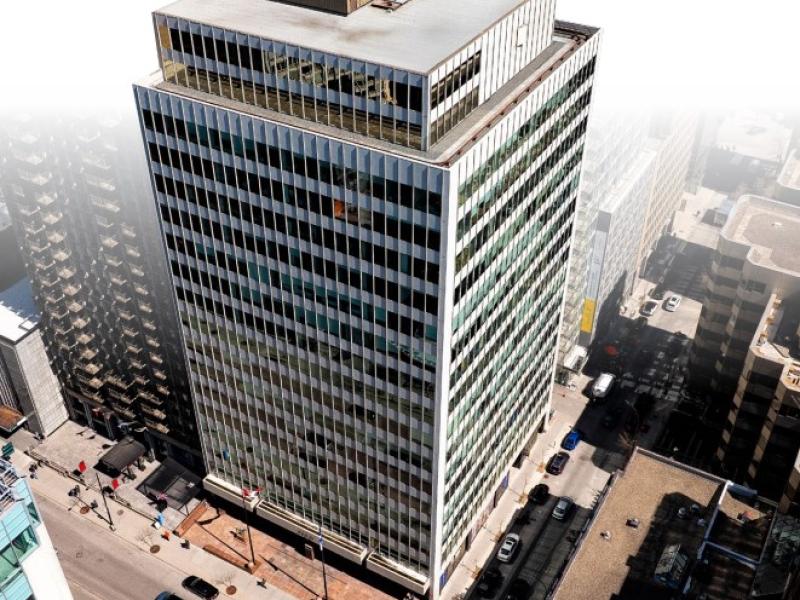If you are already an apartment building owner or looking to purchase an apartment building. you have two mortgage options.
They are a Canada Mortgage and Housing Corporation-insured mortgage or a conventional mortgage (non-CMHC). There are pros and cons to each type of mortgage, with one of the major differences being the interest rates offered.
CMHC loan insurance provides additional security to the lender.
For this reason, the coupon rates on mortgages insured by CMHC have been less than non-CMHC loans, making them very attractive to apartment building owners.
CMHC financing more popular
Over the last decade, CMHC financing has grown in popularity as more and more owners and buyers started using the product. Activity substantially increased with the majority of the loans being placed on apartment buildings having loan insurance.
Generally, both the CMHC and lenders take a more conservative approach to underwriting a mortgage which leads to lending values being less than the property’s market value. The difference between the two would typically result in a loan amount less than if the lending value was the market value.
The key was in the policy that dictated how the mortgages were underwritten by CMHC and the rigidity of the product.
Recognizing change was needed, CMHC recently announced revisions to its underwriting policies that led to improvements in financing availability. The changes have been very positive and have and will continue to help property owners get the most out of their properties.
Non-recourse mortgages
One of the biggest changes relates to non-recourse mortgages.
Under the previous CMHC underwriting policy, a non-recourse mortgage was considered to be at 60 per cent or less of the lending value of a property. This means the property was the only security or recourse the lender had for the mortgage since personal or corporate guarantees were not provided for the loan.
This forced an owner to keep at a minimum 40% of their equity in the property on either a refinance of an existing mortgage or on the placement of a new mortgage as part of a purchase.
The recent change, though, has seen CMHC increase the non-recourse level for its loan insurance to 65% of the lending value of the property. This means an owner can withdraw five per cent more of his equity as part of their financing.
While it may not seem like much, the key is that when compared to conventional financing, non-recourse mortgages can be difficult to obtain at higher leverage points such as 65% of the lending. If they are available, they may start at considerably lower leverage points.
Guarantee structure changes
Another change to the underwriting policy has focused on the guarantee structure when underwriting loans.
Under the old policy, CMHC required personal guarantees for all loans above 75% leverage. The guarantee could be complicated but, generally for loans above 75%, they could be up to 50% of the loan amount for the duration of the loan.
The guarantee was fixed and did not reduce as the loan balance was paid down.
Under the new underwriting policy, CMHC will review each application, but one of the key changes is the guarantee for an individual is no longer up to 50% of the loan amount, but instead will now represent 40% of the outstanding loan amount at any time.
This change helps owners as part of their overall credit, since their liability and exposure reduces over time as the balance of the loan reduces over time.
The leverage point for a borrower providing only a corporate guarantee on a mortgage without providing personal guarantees limited their borrowing power to a maximum of 75% leverage.
Under the new policy, CMHC is allowing a corporate entity to borrow up to 85% of the lending value of the property. This could have a substantial impact on additional cash flow from a property on a refinance and an increase in IRR on a purchase.
Capitalization rates
Capitalization rates have always been an area of contention between an owner of a property and the capitalization rates used by CMHC in underwriting.
Traditionally, there has been a wide margin between a market capitalization rate and the lending capitalization rate, with the direct result to the property owner being an erosion of value between the two.
With a lower lending value derived by the lender, the property owner was unable to maximize his financing efforts on a refinance of the property and received less equity.
The same was true on the purchase of a property and the buyer had to raise more equity into the transaction in order to purchase a property.
Recognizing the difficulties this presented, CMHC has begun to use cap rates in underwriting that have been closer to market, which has led to less of a gap between the two different values. Lending valueswill always be based on cash flow from a property, but the use of capitalization rates closer to market definitely helps.
CMHC has done a great job reviewing and revitalizing the program which will only lead to continued success in recognizing its importance in the Canadian market.
With all the rapid changes, the best course of action is to discuss the changes and how they impact borrowers with your financing specialist.







